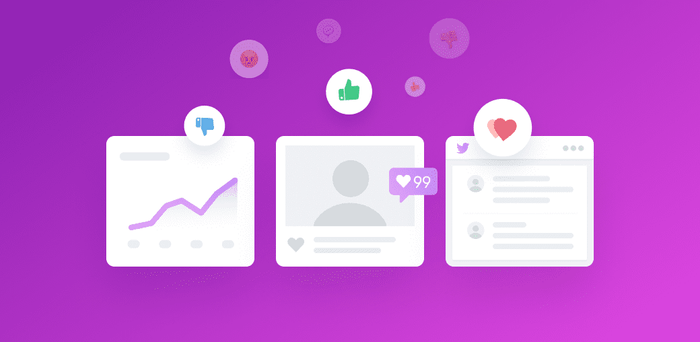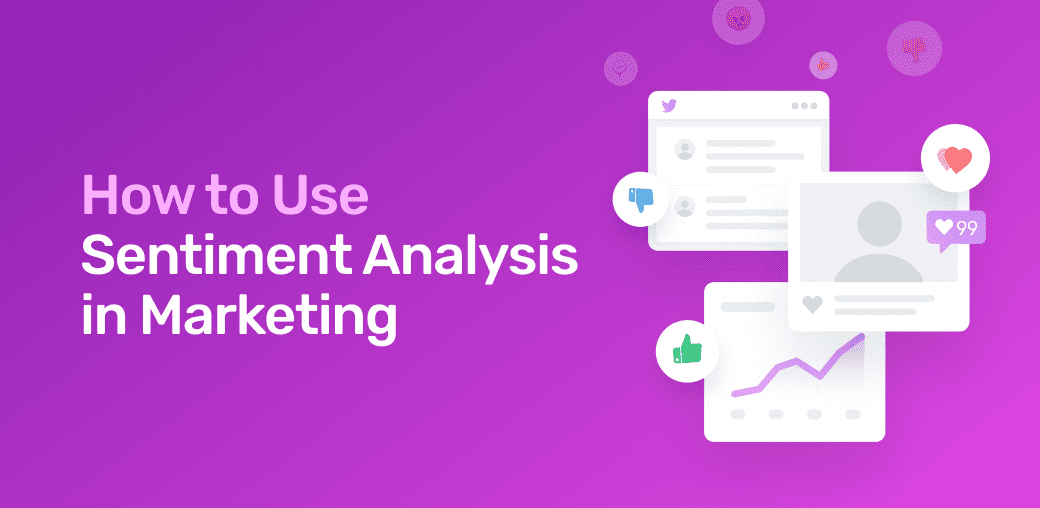In the ever-evolving landscape of marketing, understanding customer sentiments has become a pivotal factor in devising successful strategies. Sentiment analysis, a powerful tool that delves into the emotions behind customer interactions, provides businesses with invaluable insights that can shape their campaigns, products, and services. This article explores the significance of sentiment analysis for marketing, its methodologies, benefits, and how it can revolutionize the way businesses connect with their audience.
Sentiment Analysis for Marketing: Unveiling Customer Emotions for Strategic Success

In an era where consumers wield significant influence through social media and online reviews, grasping their emotions and opinions is a game-changer for businesses. This is where sentiment analysis steps in, enabling marketers to decode customer sentiments and use this information to their advantage.
What is Sentiment Analysis?
Sentiment analysis, also known as opinion mining, involves the use of natural language processing and text analysis techniques to determine the emotional tone behind a piece of text. Whether it’s a tweet, a product review, or a blog post, sentiment analysis can categorize the sentiment as positive, negative, or neutral, giving businesses a comprehensive overview of how their customers perceive their offerings.
Why is Sentiment Analysis Crucial for Marketing?
1. Understanding Customer Preferences
By deciphering customer sentiments, businesses can gain insights into their preferences and pain points. This information can be utilized to tailor products and services to meet customer expectations effectively.
2. Enhancing Brand Perception
Sentiment analysis allows companies to monitor how their brand is perceived by the public. Positive sentiments indicate that the branding strategies are effective, while negative sentiments signal areas that need improvement.
3. Adapting to Market Trends
Tracking sentiment trends enables businesses to stay ahead of the curve. Identifying shifts in sentiment helps companies adapt their marketing strategies to align with evolving market preferences.
Methodologies for Sentiment Analysis
1. Lexicon-Based Analysis
Lexicon-based sentiment analysis relies on predefined dictionaries of words associated with different emotions. The approach assigns a sentiment score to text based on the presence of these words, enabling quick analysis.
2. Machine Learning Approaches
Machine learning techniques involve training algorithms on large datasets to recognize sentiment patterns. These models can learn to identify nuanced sentiments and perform exceptionally well on complex texts.
3. Hybrid Methods
Hybrid methods combine lexicon-based and machine-learning approaches for more accurate results. They leverage the strengths of both techniques to overcome their limitations.
Benefits of Implementing Sentiment Analysis
1. Data-Driven Decision Making
Sentiment analysis empowers marketers with data-driven insights. By making decisions based on customer emotions, businesses can tailor their strategies for maximum impact.
2. Personalized Marketing
Understanding sentiment allows for personalized marketing campaigns that resonate with individual customers on an emotional level, fostering stronger connections.
3. Proactive Crisis Management
By detecting negative sentiments early, businesses can address issues before they escalate, demonstrating responsiveness and building customer trust.
Applications of Sentiment Analysis in Marketing
1. Social Media Campaigns
Sentiment analysis aids in crafting effective social media campaigns. Marketers can gauge public reactions to their posts and adjust their content accordingly.
2. Product Development
By analyzing sentiment around existing products, businesses can identify areas for improvement and innovate based on customer feedback.
3. Competitor Analysis
Sentiment analysis isn’t limited to a company’s brand. It can also be used to gain insights into how competitors are faring in the market.
Challenges
1. Contextual Understanding
Text often carries contextual nuances that can alter its sentiment. Sentiment analysis tools need to grasp these subtleties to provide accurate results.
2. Handling Sarcasm and Irony
Understanding sarcasm and irony in a text can be challenging for sentiment analysis algorithms, leading to misinterpretations.
3. Multilingual Analysis
Analyzing sentiments in multiple languages demands robust language support and an understanding of cultural nuances.
Choosing the Right Sentiment Analysis Tool
Selecting the appropriate sentiment analysis tool depends on factors like the nature of your data, the languages involved, and the level of accuracy required.
Implementing Sentiment Analysis into Your Marketing Strategy
1. Define Your Goals
Clearly outline what you aim to achieve with sentiment analysis. Are you tracking brand perception, evaluating product feedback, or something else?
2. Selecting Data Sources
Choose relevant sources such as social media platforms, reviews, and customer feedback forms. The quality of your data directly affects the accuracy of analysis.
3. Interpreting Results
Interpreting sentiment analysis results requires a nuanced understanding of both the data and the context. Positive sentiment might indicate satisfaction, but it could also point to sarcasm.
Future Trends
As technology advances, sentiment analysis is likely to become more sophisticated. Integration with AI and machine learning will enable even deeper insights into customer emotions.
Conclusion
Sentiment analysis has transcended being a mere tool; it’s now a necessity for businesses aiming to connect authentically with their audience. By understanding the emotional undertones of customer interactions, companies can refine their marketing strategies, tailor their offerings, and ultimately build enduring customer relationships.
Unlock the potential of sentiment analysis with AIM Technologies. Request a demo today and discover how our advanced tools can transform the way you understand and engage with your customers.
FAQs
What tools are commonly used for sentiment analysis?
- There are several tools available for sentiment analysis, including Lexalytics, IBM Watson, and Google Cloud Natural Language.
Can sentiment analysis understand slang and informal language?
- Many sentiment analysis models are trained on a wide range of language patterns, including slang, to ensure accurate results.
Is sentiment analysis only applicable to text-based data?
- While the text is the primary focus, sentiment analysis can also be extended to other forms of data like images and videos using advanced techniques.
How frequently should I conduct sentiment analysis?
- The frequency depends on your business goals. Some companies do it in real-time, while others perform it periodically to track long-term trends.
What’s the role of human validation in sentiment analysis?
- Human validation is crucial to refine the accuracy of sentiment analysis models. Human reviewers can understand context better, especially in complex cases.


